How to sharpen a knife in a few simple steps
Want to know how to sharpen a knife? Here’s how
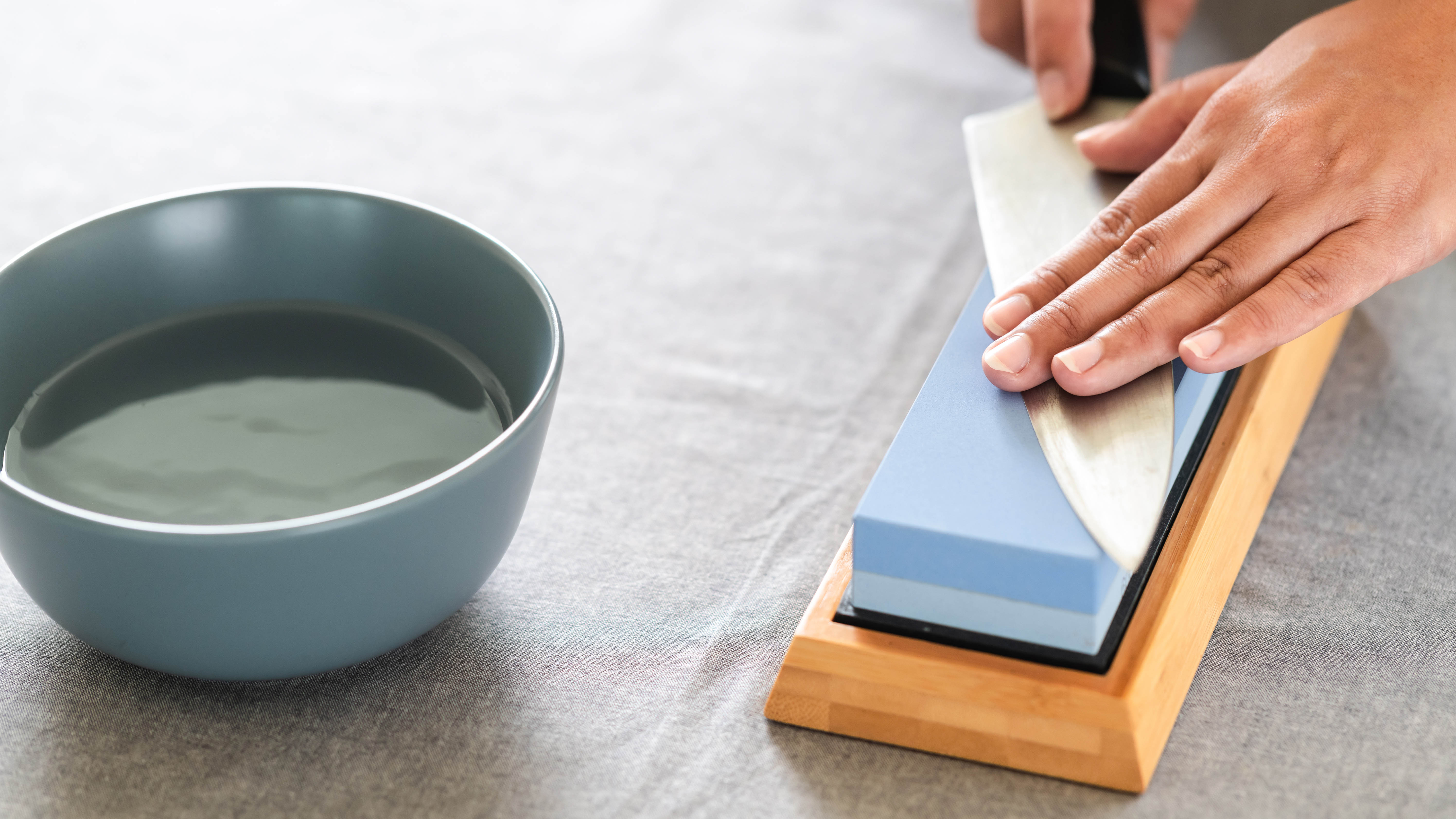
Whether you enjoy cooking up a storm or simply want to carve foods with ease, knowing how to sharpen a knife properly can make all the difference. It's not uncommon for many cooks to buy new knives when unsure of how to sharpen a knife. However, it’s actually very simple to do and takes no time. Plus, it will save you money on those expensive knife sets.
To maintain your knives, be sure not to chuck them in the dishwasher, and sharpening them regularly when the blade grows dull. While they are one of the dirtiest things in the kitchen, some knife blocks actually contain knife sharpeners, so you may already have what you need. In the meantime, here’s how to sharpen a knife with a stone or a knife sharpener.
The best cutting boards can make all the difference. Be sure to check out these 7 mistakes which are ruining your kitchen knives as well. And here are 7 clever ways to store kitchen knives.
How to sharpen a knife with a knife sharpener
There are two predominant ways you can sharpen your knives at home. The first involves using a knife sharpener. This is a very popular method and these handheld tools can be found in most department stores. If you don’t already own one, then we recommend the Kitchellence 3-Stage Knife Sharpener ($16.99, Amazon).
Knife sharpener (optional)
Whetstone (optional)
Towel or rubber mat (optional)
These are very straightforward to use. Most will come with a couple of notches for coarse grit and fine grit. You essentially want to drag your knife slowly towards yourself through the coarse grit notch first, using a light pressure, and then alternate to the other side of the blade. Do this 10-12 times, depending on how dull the blade is, then pull it through the fine grit slot one to two times to polish for the finishing touches.
Electric knife sharpeners are also available, such as the Chef'sChoice Trizor XV EdgeSelect Professional Electric Knife Sharpener ($159, Amazon). The difference between the two is that electric knife sharpeners contain motorized abrasive wheels, meaning there’s less time and effort needed to use one of these. However, you arguably have more control over the process when using a manual sharpener.
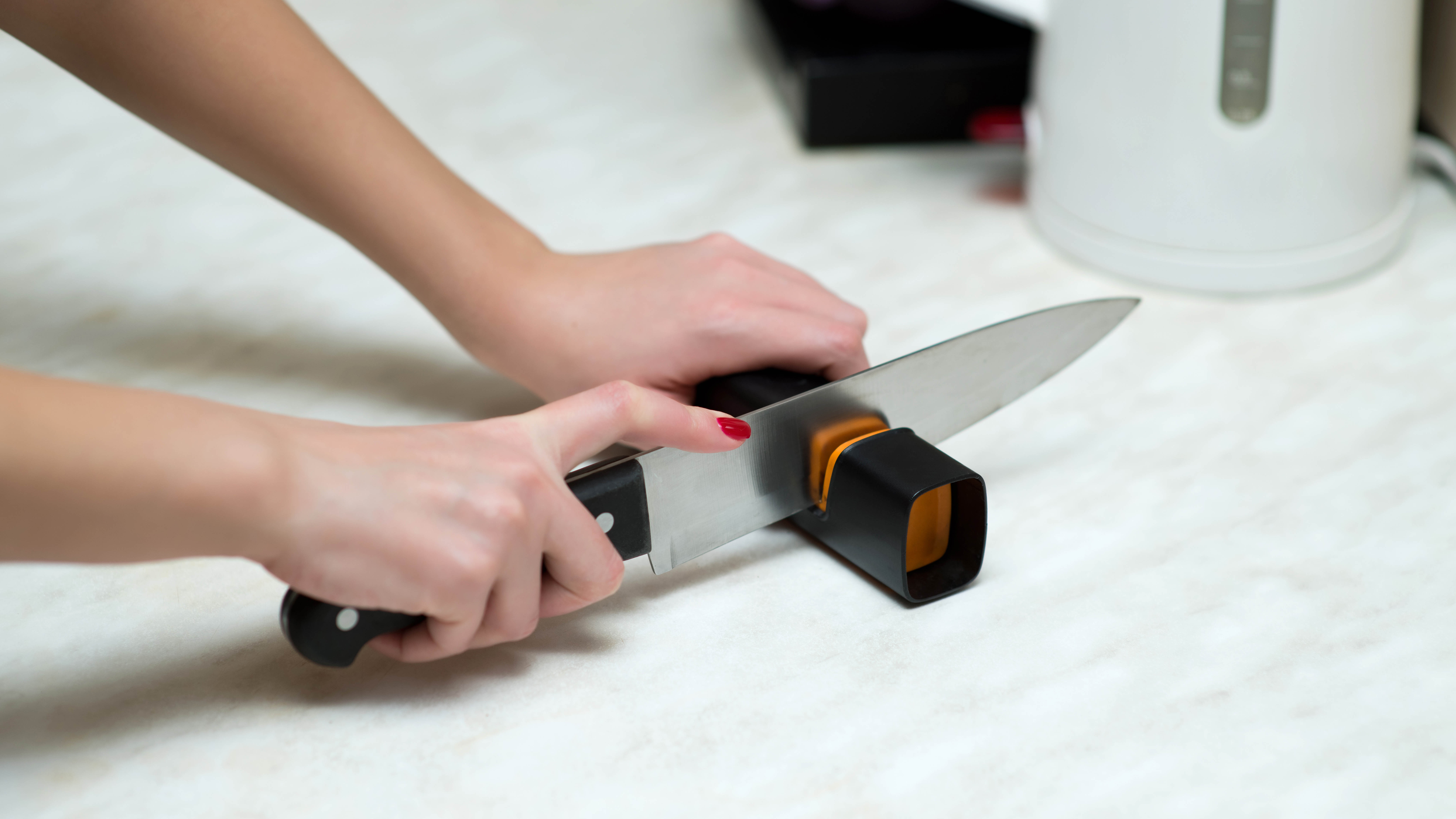
It should also be flagged that using a knife sharpener is quite an aggressive method — this will wear away a good proportion of the blade each time you use it. So this method is only recommended for cheaper knives that you can easily replace. For expensive and precious knives, you should always use a whetstone.
Get instant access to breaking news, the hottest reviews, great deals and helpful tips.
How to sharpen a knife with a stone
If you want to give your knives the best treatment possible, and you want them to last, then we recommend using a whetstone. Most whetstones will have two sides — a coarse grit side and a fine grit side. And the prospect of sharpening the knife is much the same, but the process is a little more complicated. If you don’t already own a whetstone, then we recommend the Sharp Pebble Premium Whetstone Knife Sharpening Stone ($39.99, Amazon).
1. Make sure you place a towel or mat underneath your whetstone so it can’t slip in use. The one we recommend above comes with a non-slip bamboo base for this very reason.
2. Next, check if your whetstone needs to be submerged in water or rubbed with oil before use. Instructions can vary, but most need to be submerged in water for five to 10 minutes, or until air bubbles stop leaking.
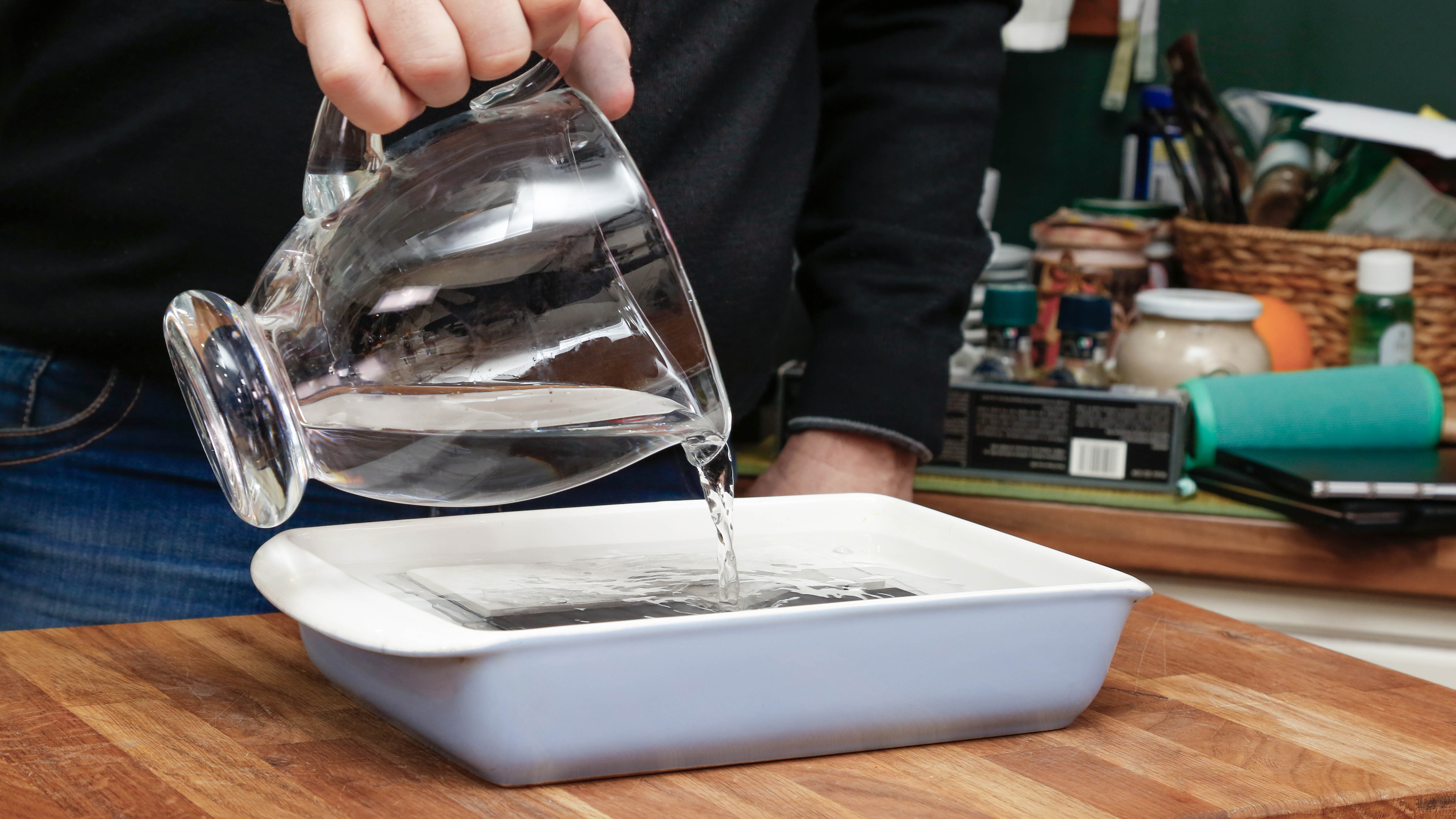
3. Face the whetstone coarse-side up on the towel on your counter.
4. If your knife came with a manual, check it to see if it offers guidance on the angle to sharpen. Most will require the blade to be dragged at a 20 degree angle.
5. Place the edge of the blade at the correct angle against the whetstone, facing away from yourself, with one hand secured on the handle, and one against the flat side of the knife.
6. Using slight pressure (don’t push too hard as you can damage the blade), drag the heel of the knife towards yourself, maintaining the correct angle. Continue this momentum all the way until the tip of the blade runs off the stone.
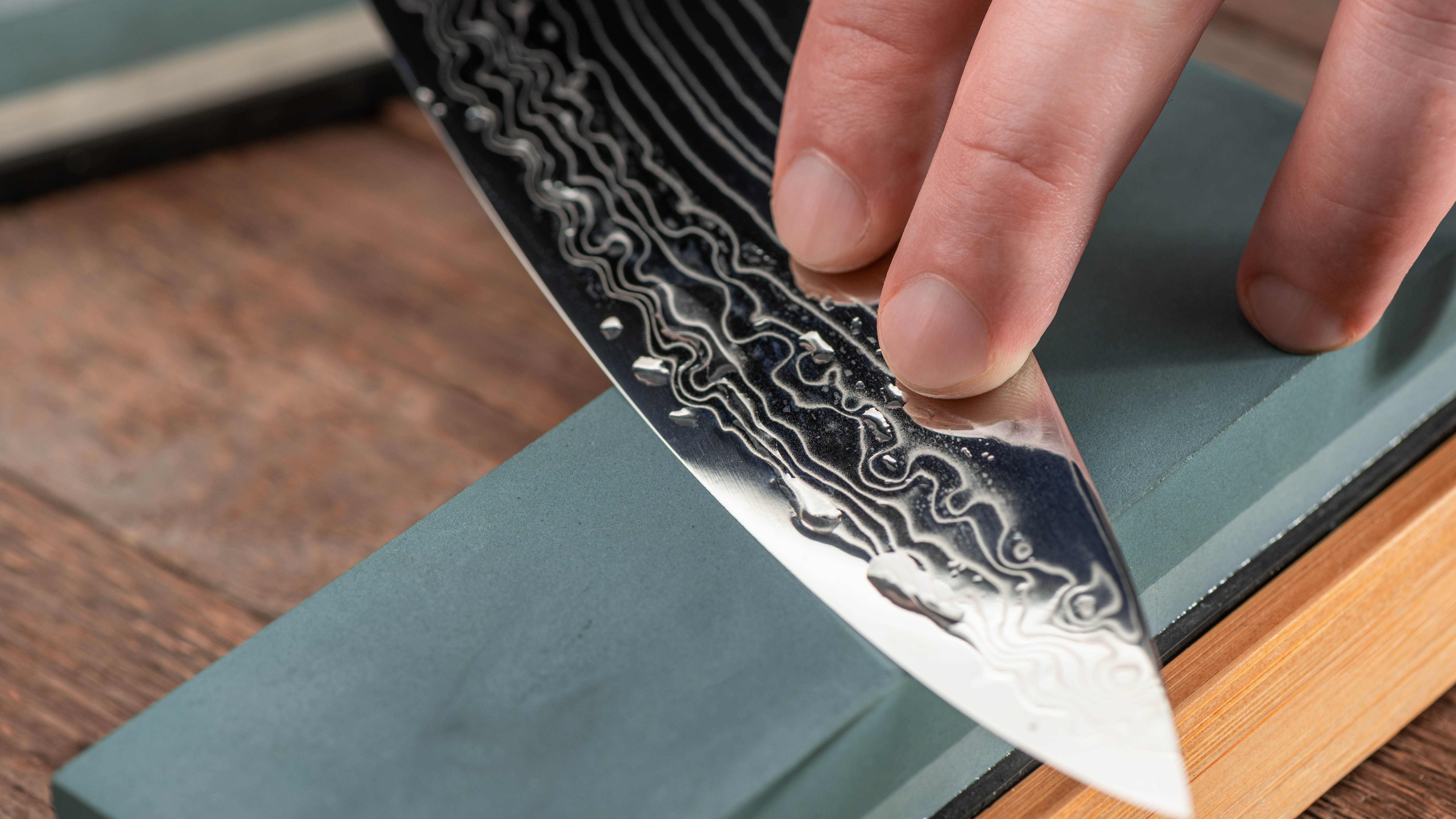
7. Repeat this three to six times, and then follow the same method on the other side of the blade. You might notice burr (worn metal) forming on the other side of the blade, which means it’s time to switch sides.
TIP - If you notice the whetstone is starting to dry out, rub some more water on it.
8. Once you’ve done this, flip over your whetstone to the fine grit side and repeat the same process three to four times.
9. If your knife still isn’t sharp enough, simply repeat the above steps.
10. Dry out your whetstone after use, wrapping it in kitchen towels before storing in a dry environment.
Your knife should now be ready to face any roast dinner or food prep challenges. If you don’t want to sharpen your knife yourself, you can also hire a local professional to do it for you.
How to hone a knife
Honing a knife shouldn’t be confused with sharpening it. However, honing it will maintain the shape of the blade, so it’s still important. To do this, place your honing steel vertically against the counter. If you don’t own one, then the Best Professional Carbon Steel Black Knife Sharpening Steel ($13.99, Amazon) is a good option.
Then, place your blade’s edge at a 15-20 degree angle against the steel. Pull it towards yourself, from heel to tip repeatedly, then switch sides.
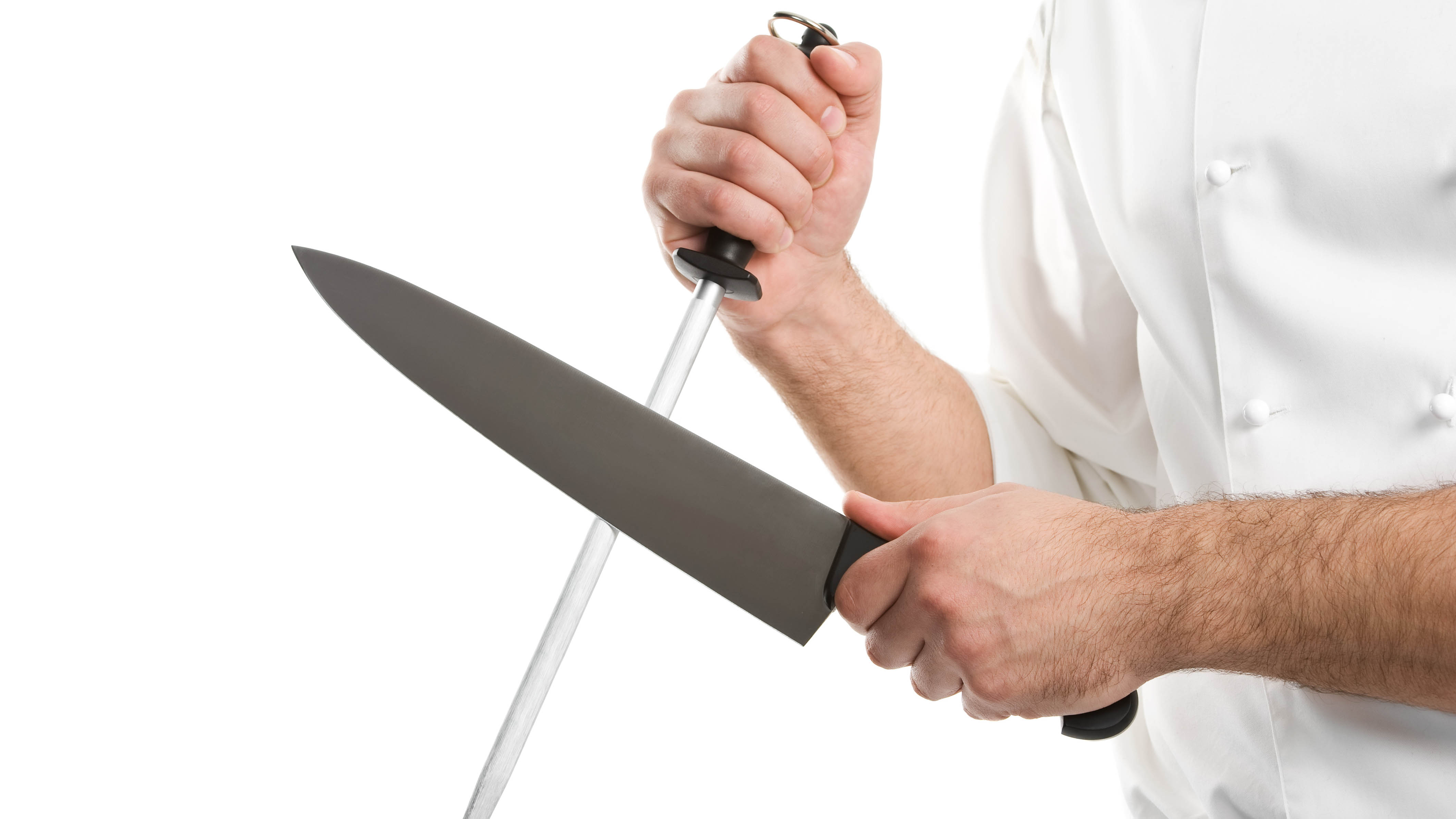
How often should I sharpen my knife?
You should sharpen your knife whenever necessary. If you’ve noticed that it’s not slicing or cutting through as easily as it used to, then it needs sharpening. Some need sharpening as little as once a year, while others may need it more frequently.
You should hone your knife much more often — once a week as a minimum with regular use. This will keep your knife better-maintained. You'll want to make sure your knife is sharp before you check out how to spatchcock a turkey for quick, even and crisp results.
How to prevent a dull blade
- Store your knives correctly — Throwing your knives into a kitchen drawer is a sure-fire method of damaging the blades. As things knock into each other in there, it will take its toll, not to mention it’s not the safest method of storing knives. Sheath your knives or use a dedicated knife block instead.
- Don’t use the dishwasher — While many knives say they’re dishwasher-safe, we really don’t recommend it. The heat and humidity can lead to rust, corrosion and even warping, so washing by hand is best. Unless you have a carbon steel blade, in which case just use a clean cloth.
Next: With your sharp knife, you can learn how to cut a watermelon to enjoy a tasty and quick snack.

As the Homes Content Editor, Cynthia Lawrence covers all things homes, interior decorating, and garden-related. She has a wealth of editorial experience testing the latest, ‘must-have’ home appliances, writing buying guides and the handy ‘how to’ features.
Her work has been published in various titles including, T3, Top Ten Reviews, Ideal Home, Real Homes, Livingetc. and House Beautiful, amongst many.
With a rather unhealthy obsession for all things homes and interiors, she also has an interior design blog for style inspiration and savvy storage solutions (get rid of that clutter!). When she’s not testing cool products, she’ll be searching online for more decor ideas to spruce up her family home or looking for a great bargain!
